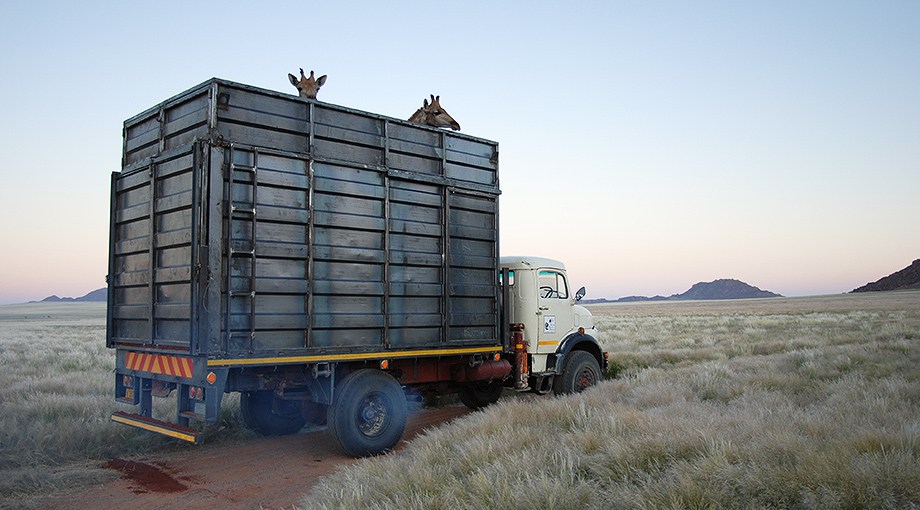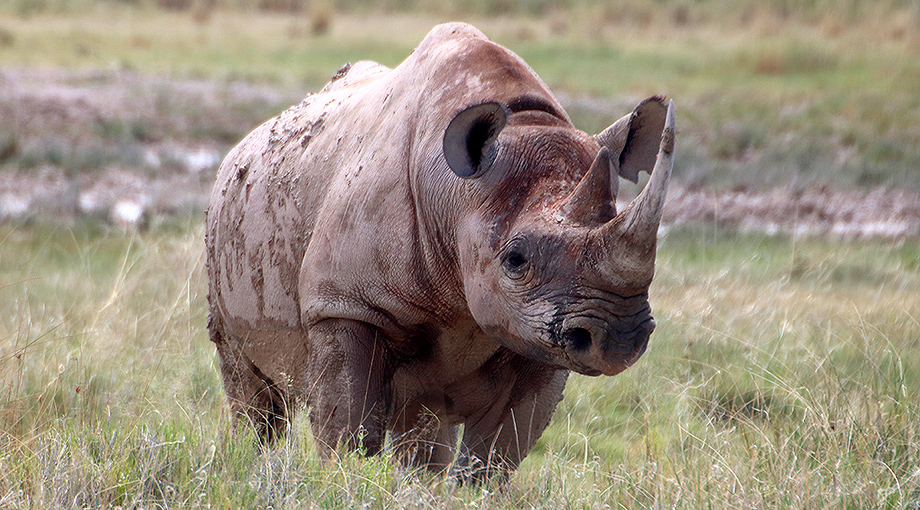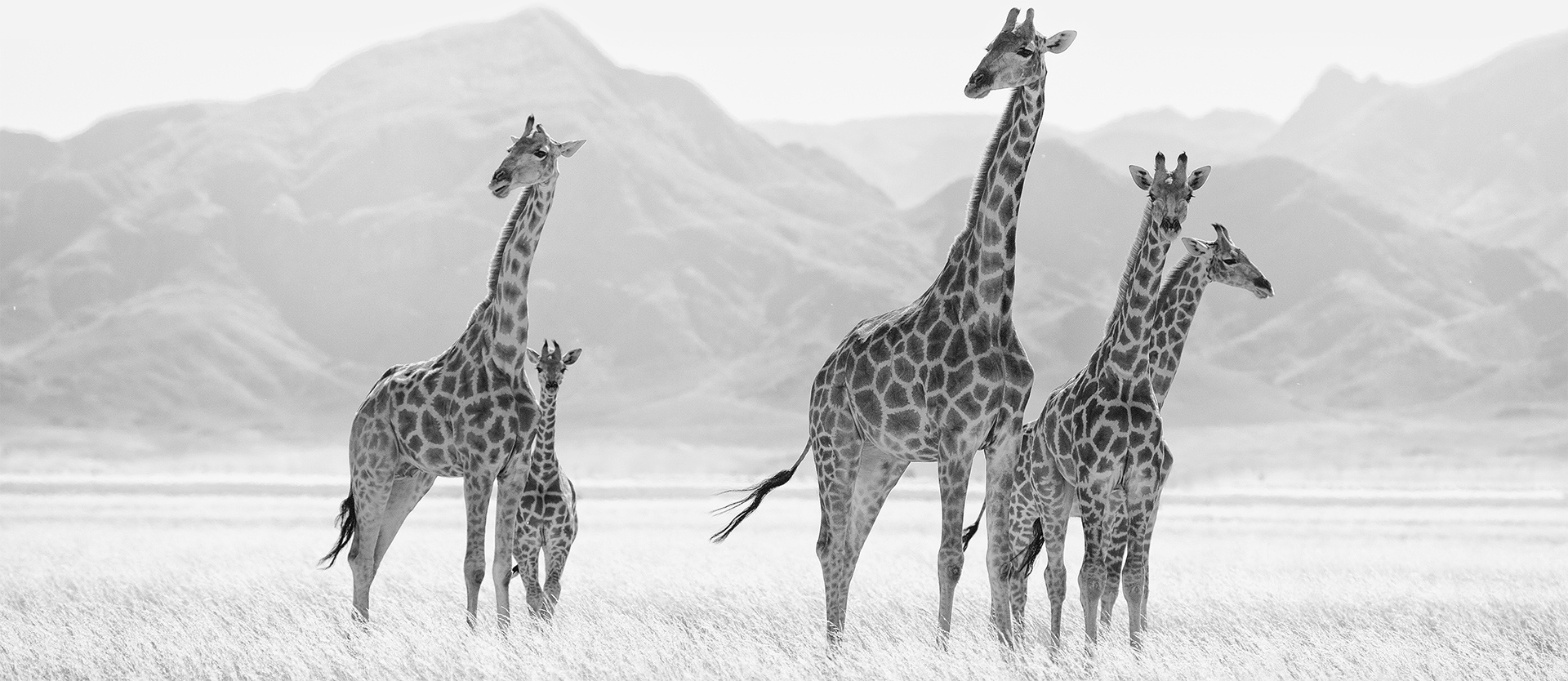A Commitment to Conservation
Giraffe & Rhino
The Camel Thorn trees (Acacia erioloba) that thrive here, thanks to the ephemeral rivers that flood during the rainy season, provide sustenance for the Angolan giraffe (Giraffa giraffe angolensis). In the 1980s, the total number of all giraffe in Africa was estimated at more than 155,000 individuals. Conservation helped halt the decline, but the population has shrunk 30% in the past 40 years. Today, the Giraffe Conservation Foundation estimates the current Africa-wide giraffe population at approximately 117,000 individuals. One of four subspecies, the Angolan giraffe that roam in Namibia number about 20,200.

Re-introducing Giraffe
The Namibian landscape is also ideally suited to the black rhino (Diceros bicornis), which, not so long ago, nearly disappeared forever, hunted almost to extinction by poachers. By the mid-1990s, the population in Africa had plunged by 98 percent – only 2,500 remained. Tireless conservation efforts have increased that number, nearly doubling the population to about 5,000, but the species remains on the critically endangered list.

Black rhino in Etosha National Park
Today, Namibia is home to the world’s last free-ranging population of black rhino – about 1,700 animals that amount to about one third of the world’s total black rhino population. Conservative estimates by Namibia’s Ministry of Environment, Forestry and Tourism suggest that up to ten black rhinos could be sustainably housed in the pro-Namib area we are proposing to conserve – an exciting conservation project for the future of the new reserve.
Oryx, springbok, mountain zebra, and other ungulates are also abundant here. Spotted and brown hyena, leopards, cheetah, ostriches, bat-eared foxes, and aardwolves can all be found.

The ProNamib Trust
The ProNamib Trust was established in March 2020 in order to facilitate the acquisition of land for conservation and to raise funds for the Environment.

